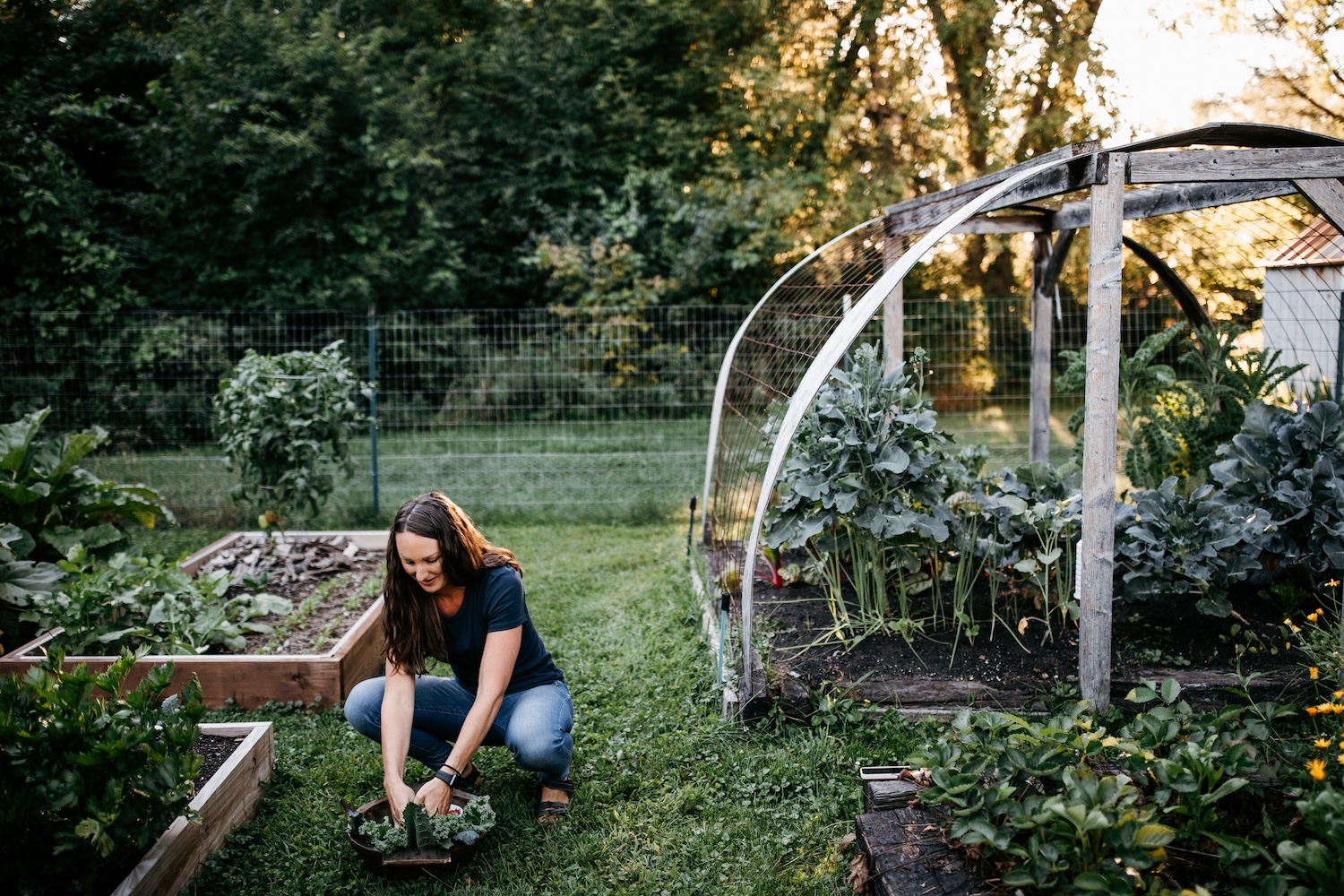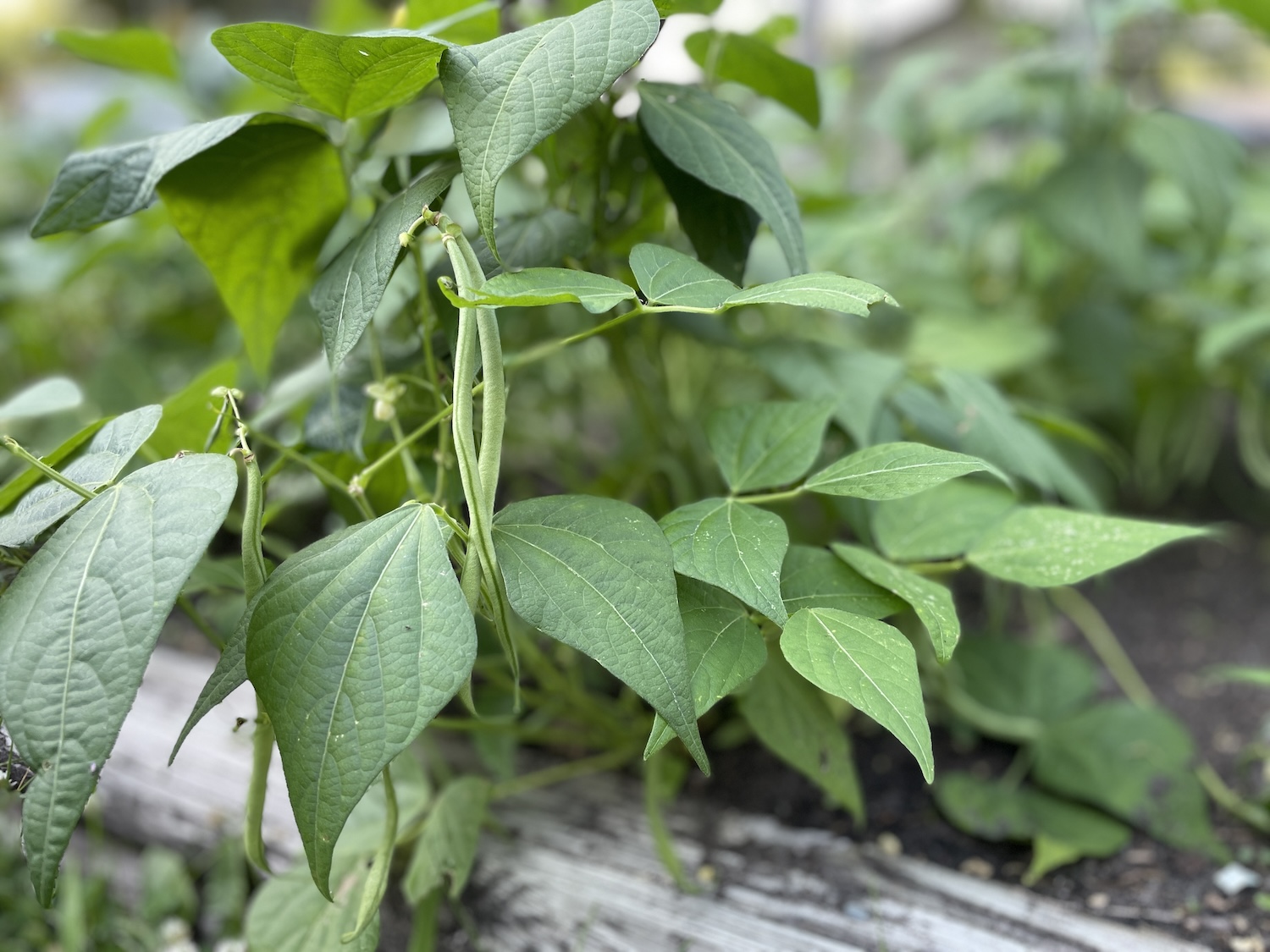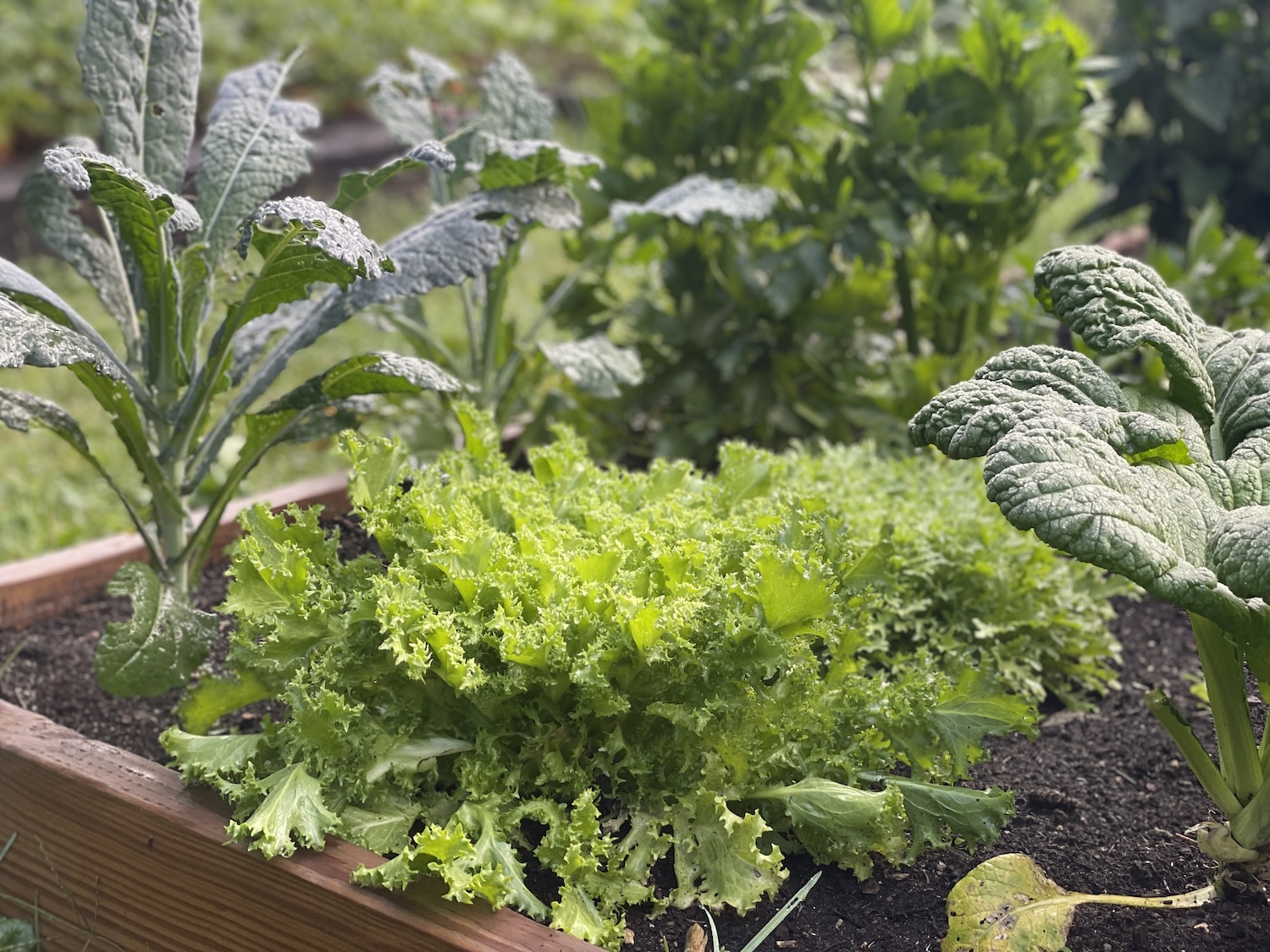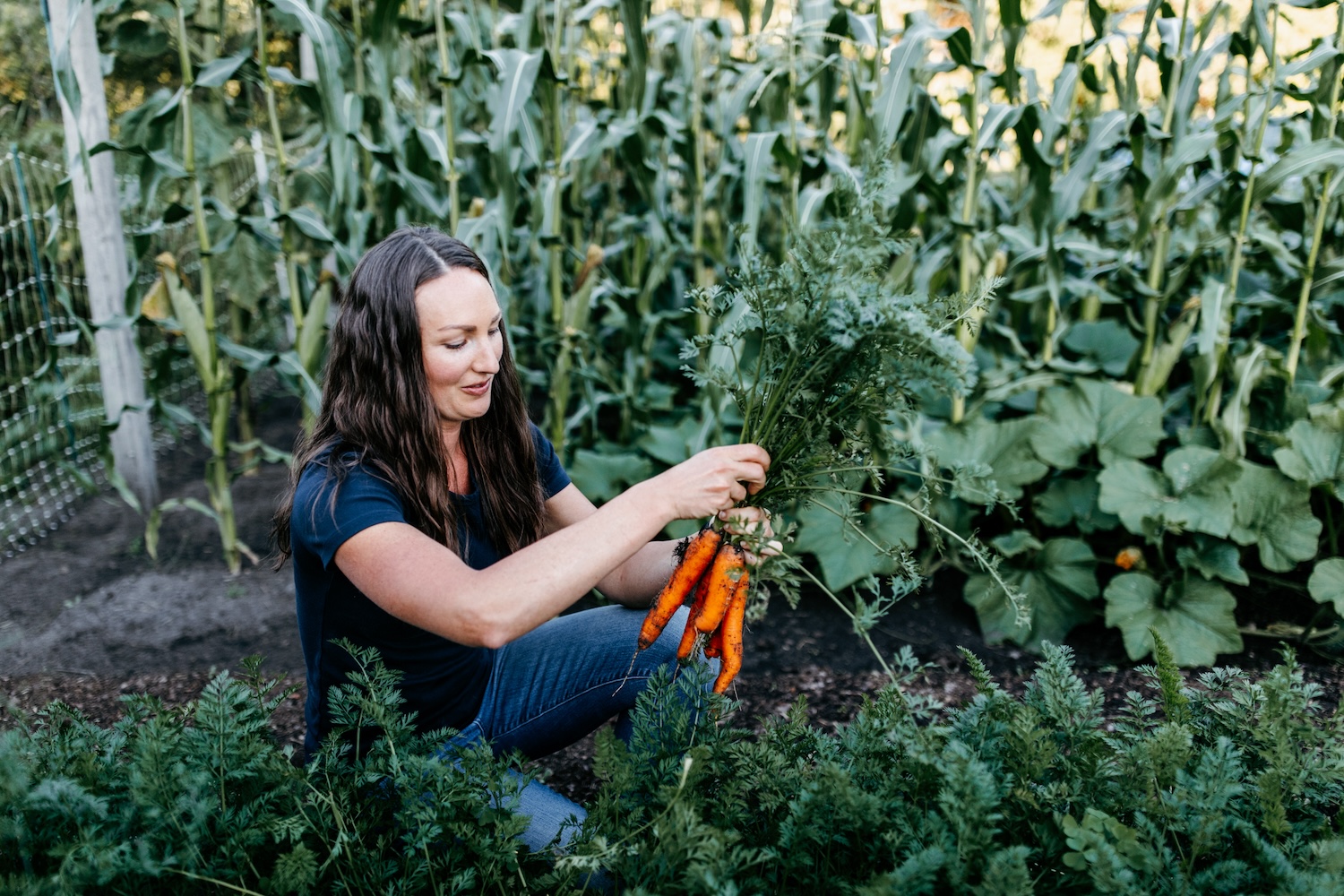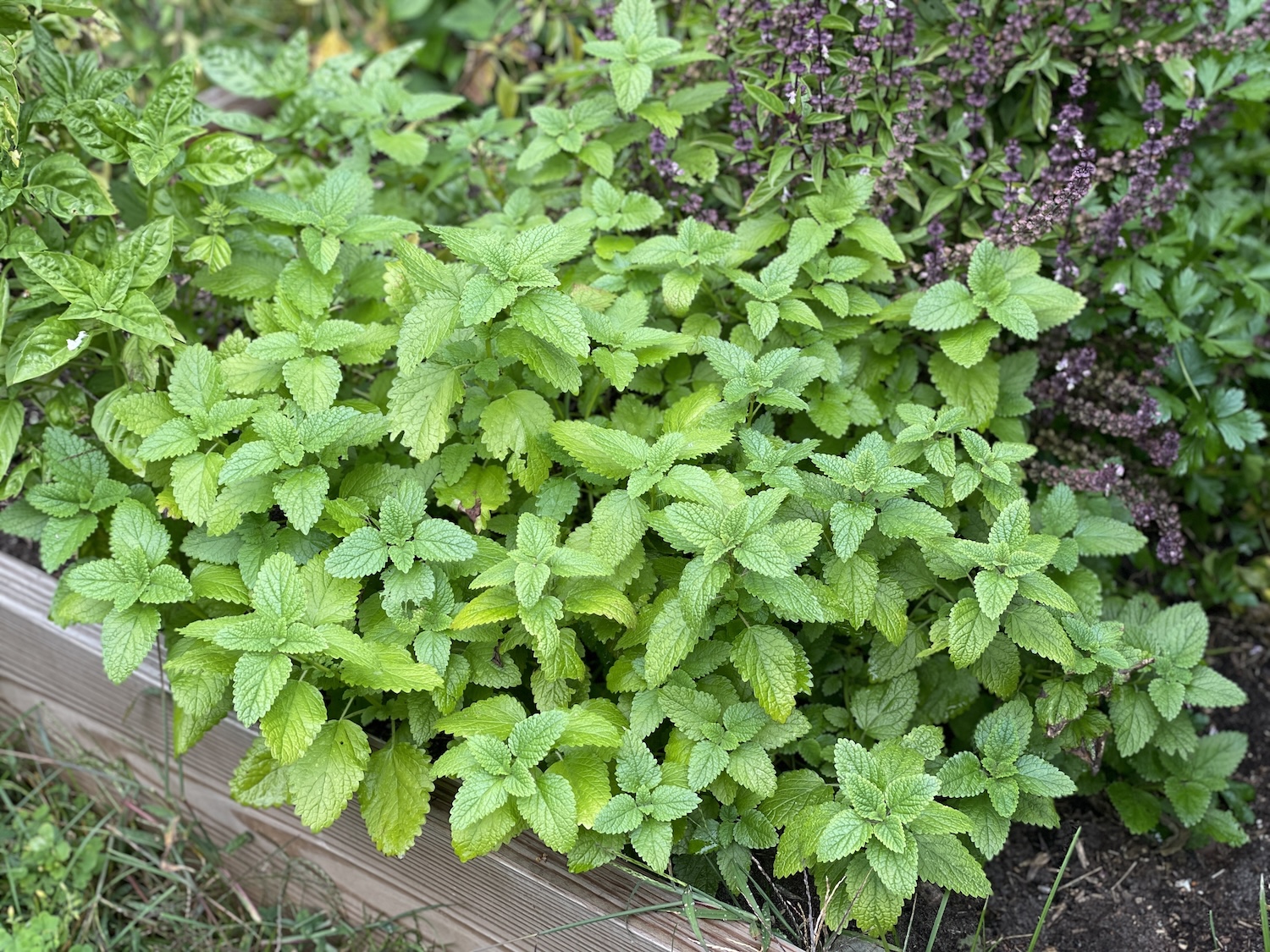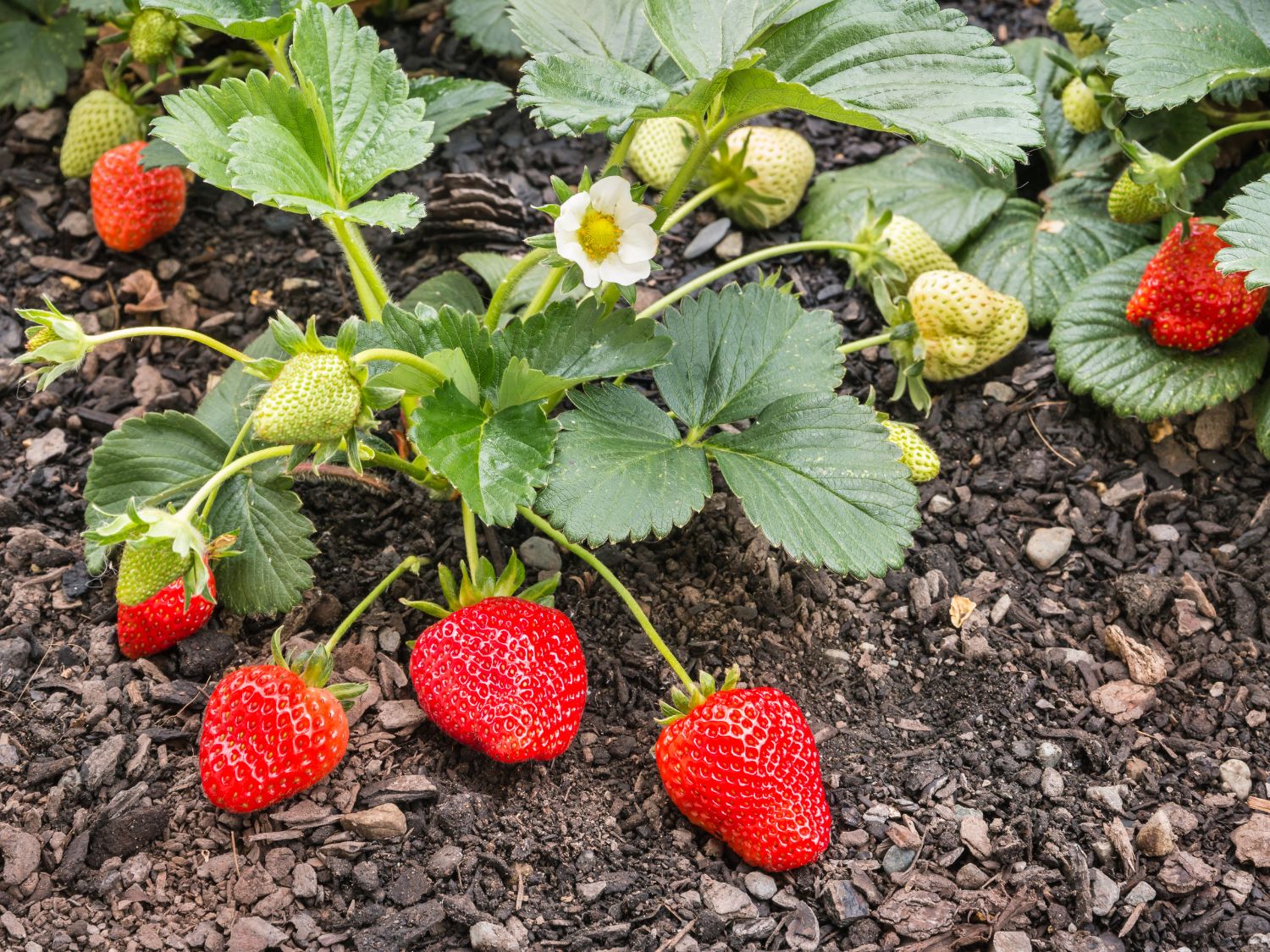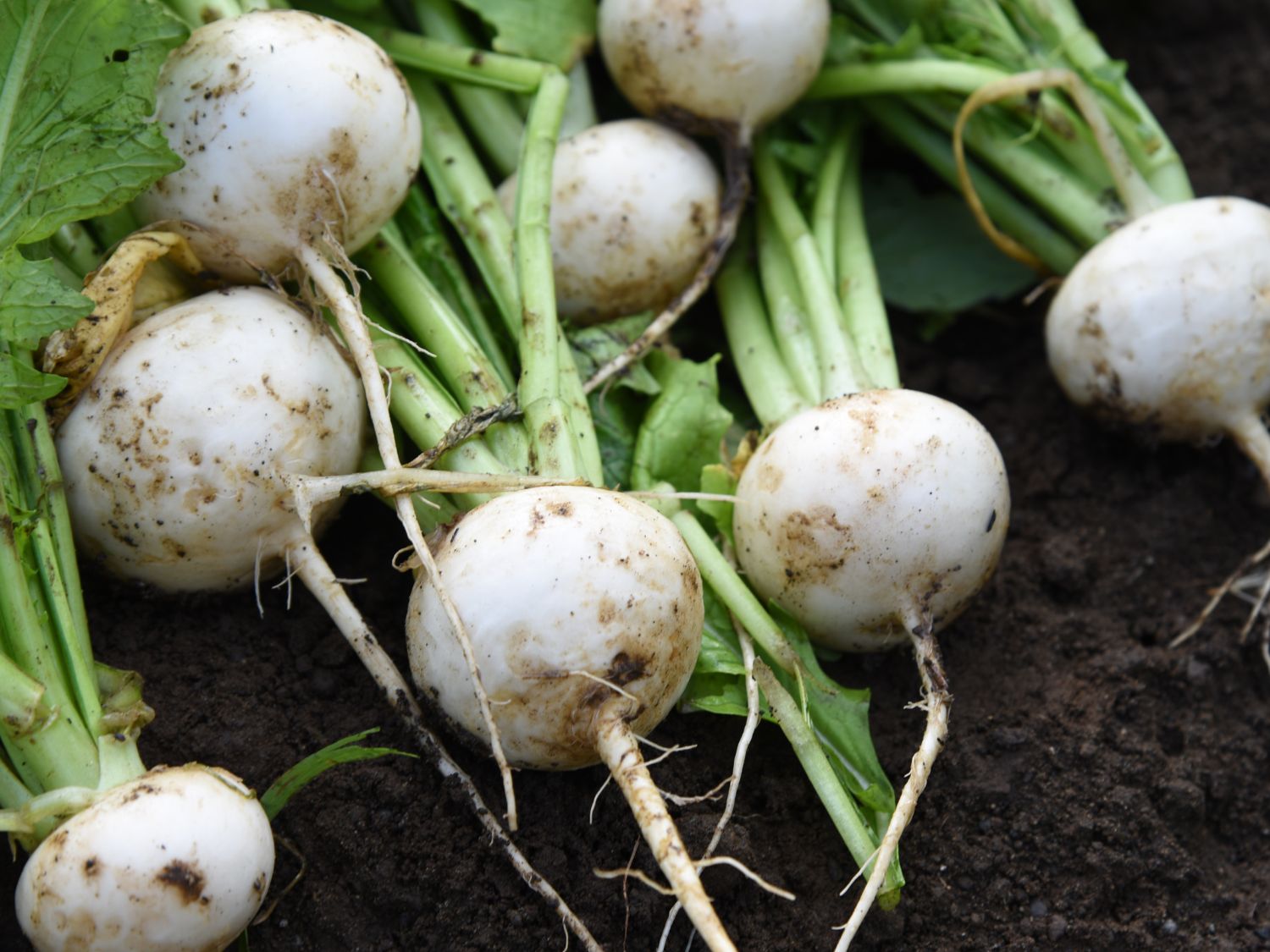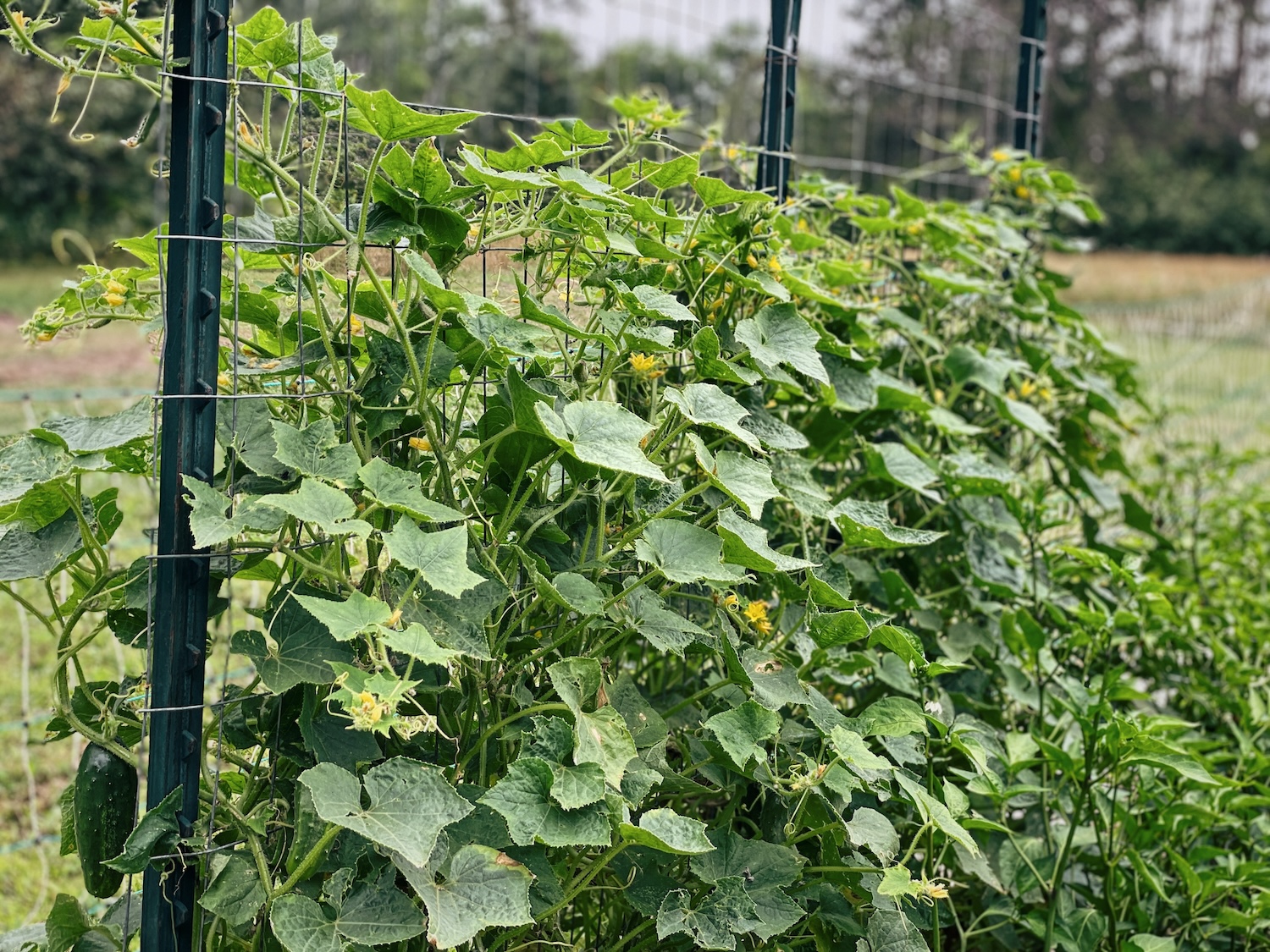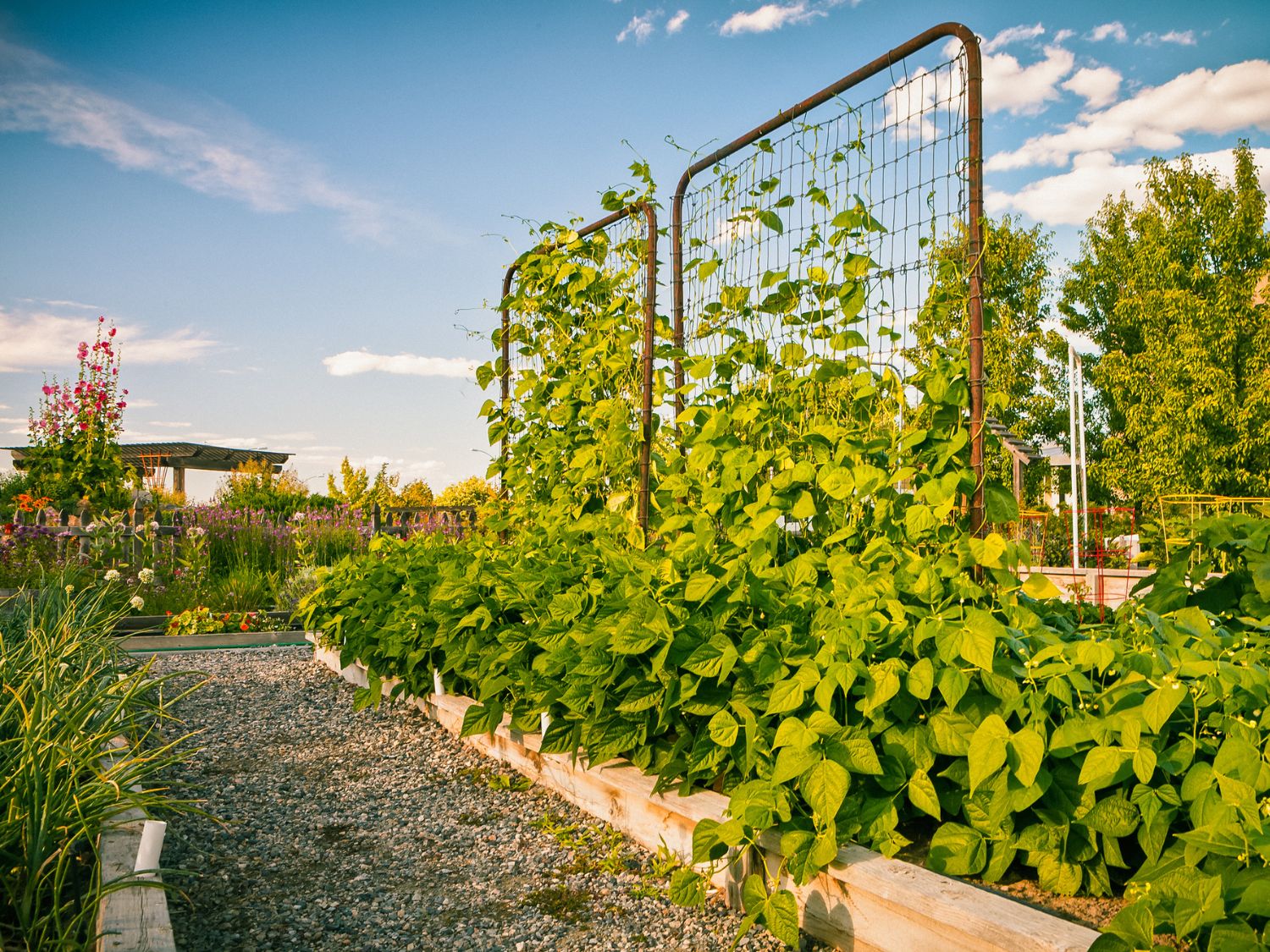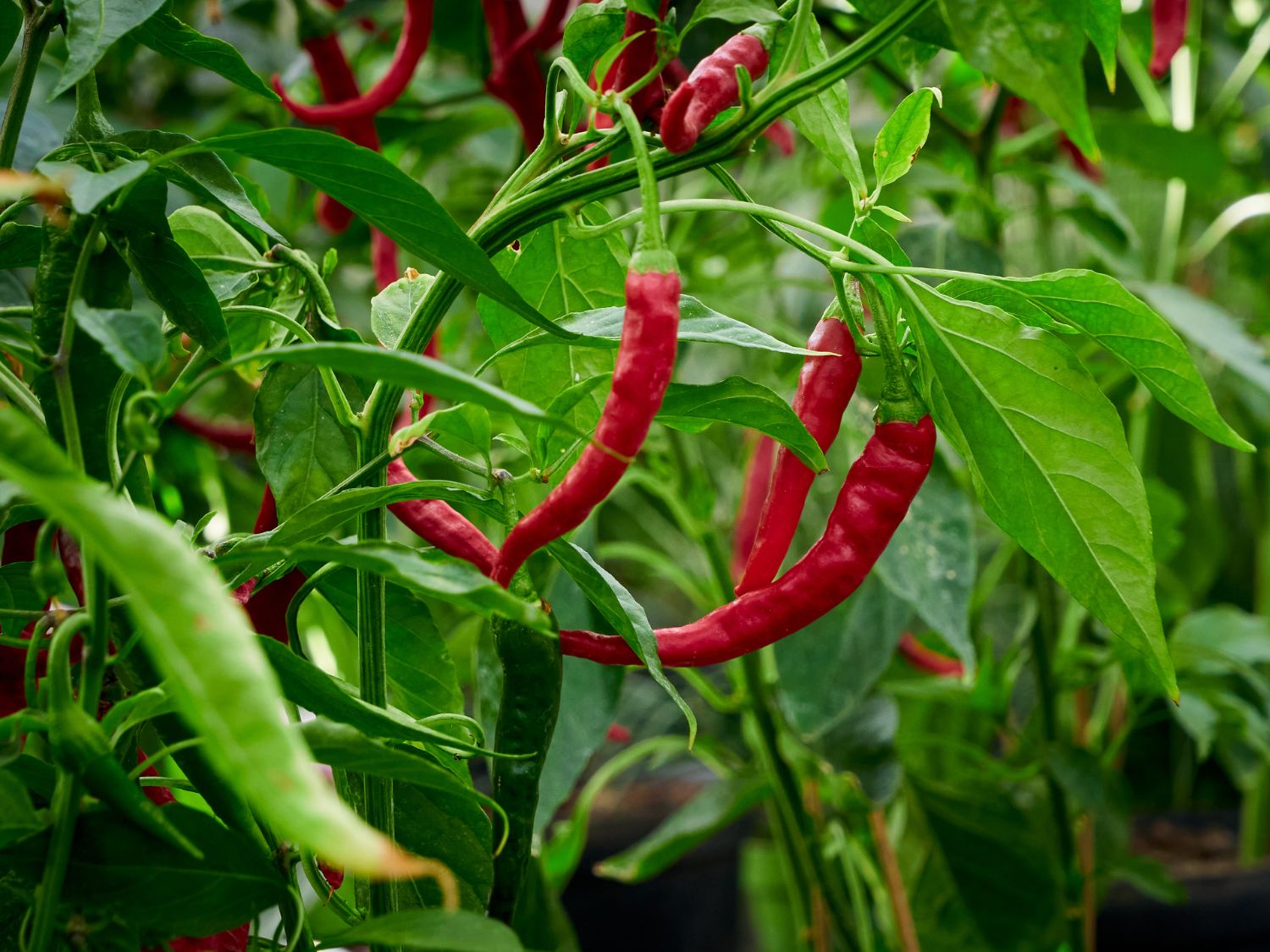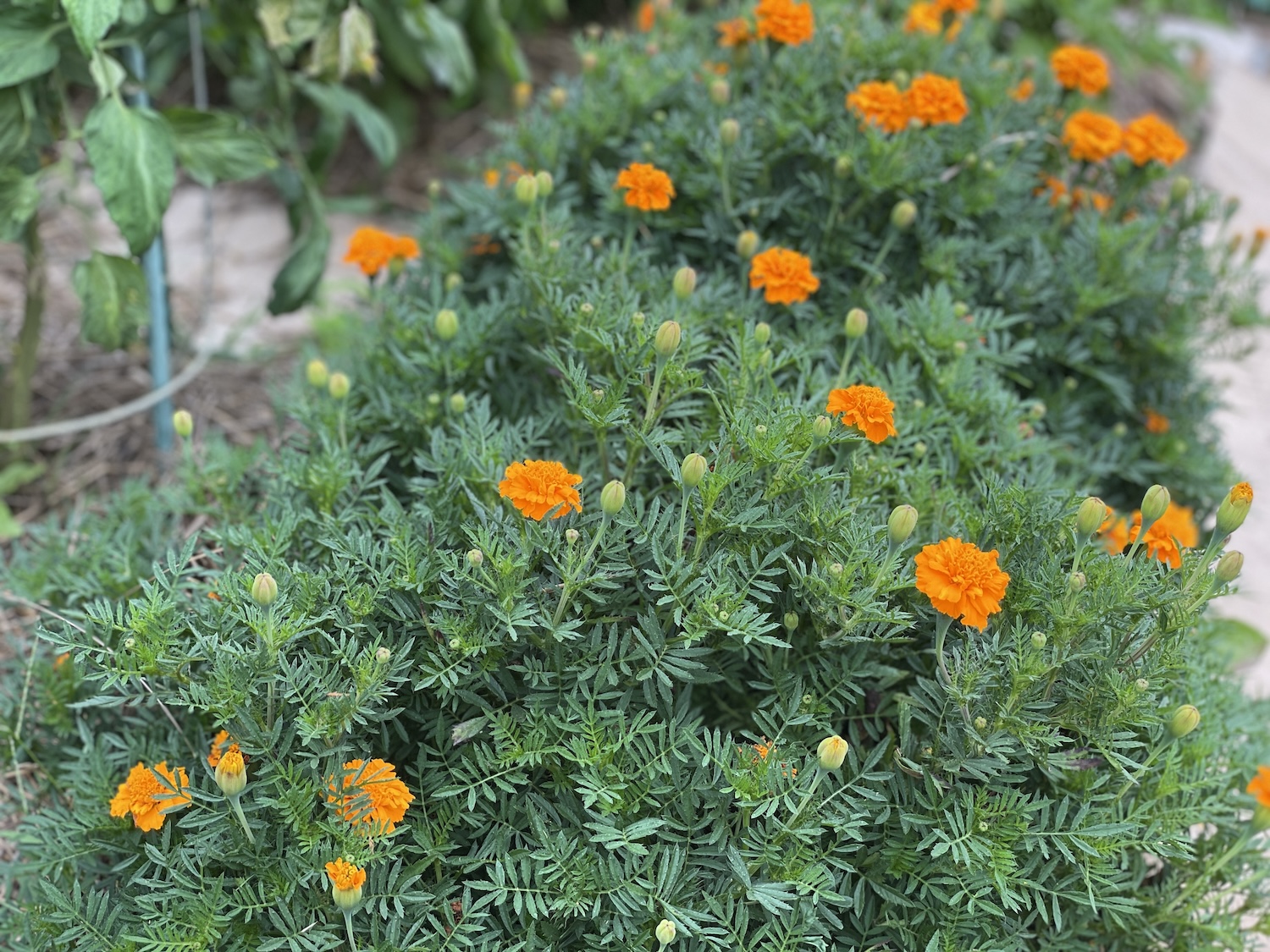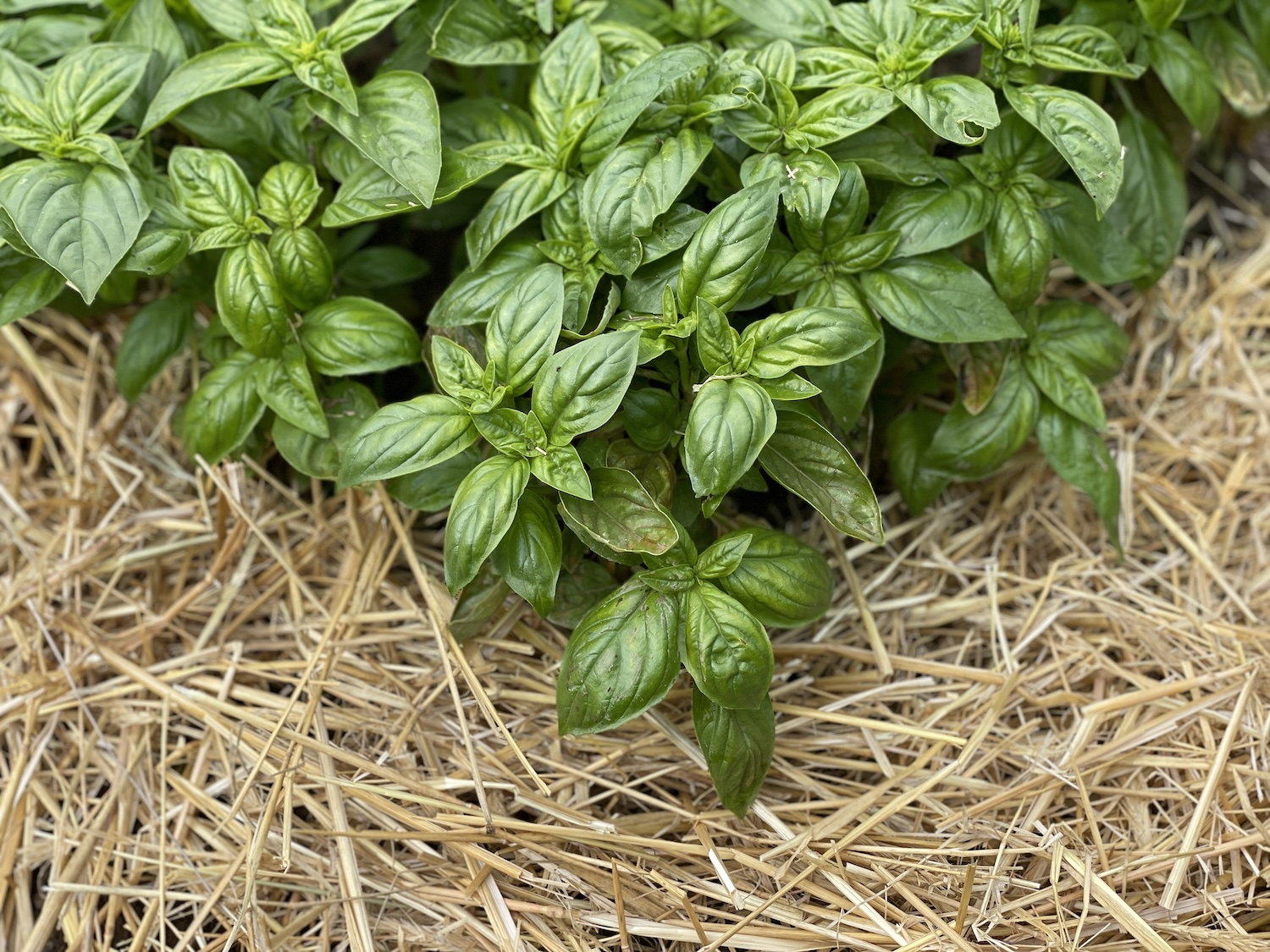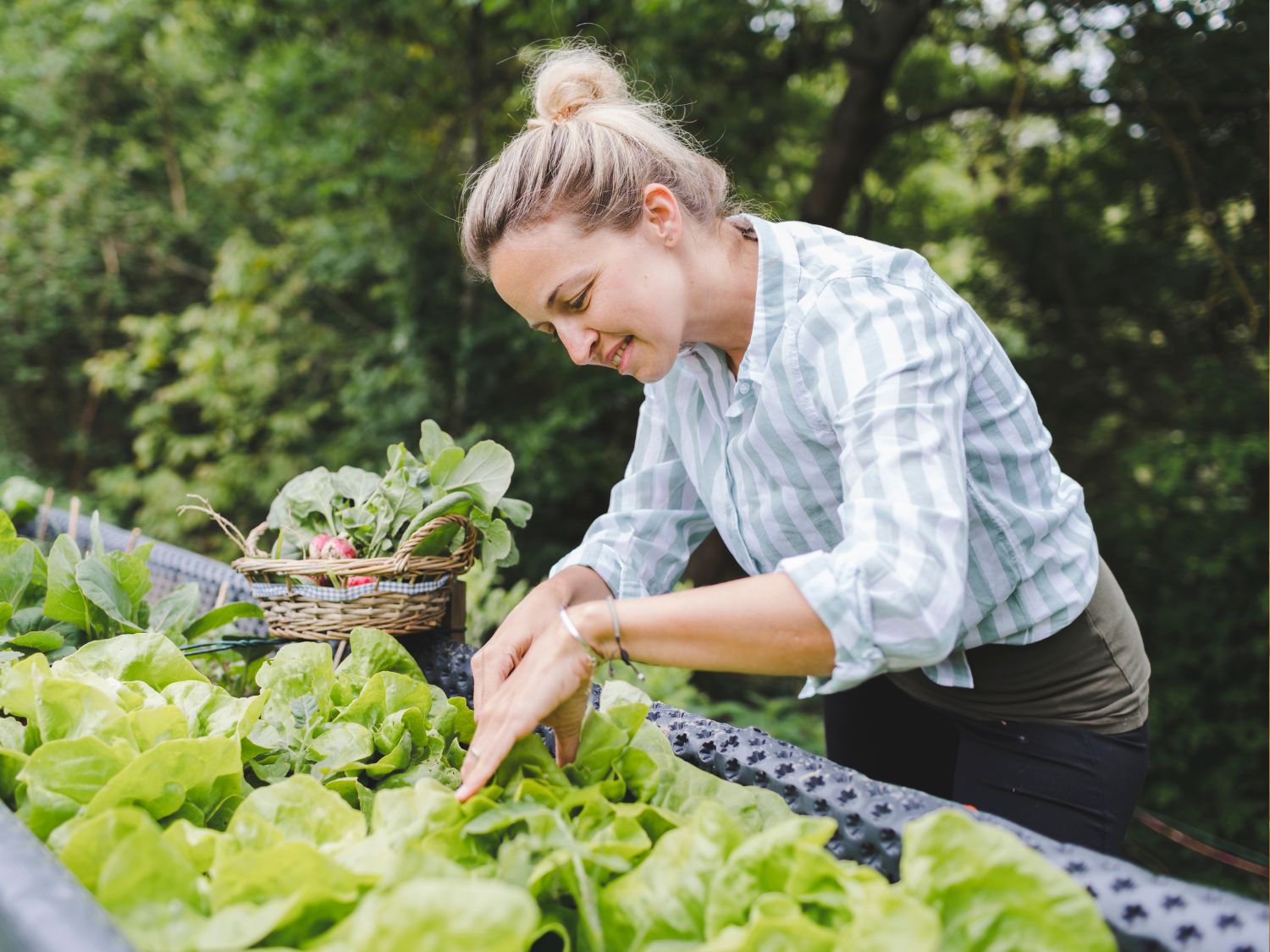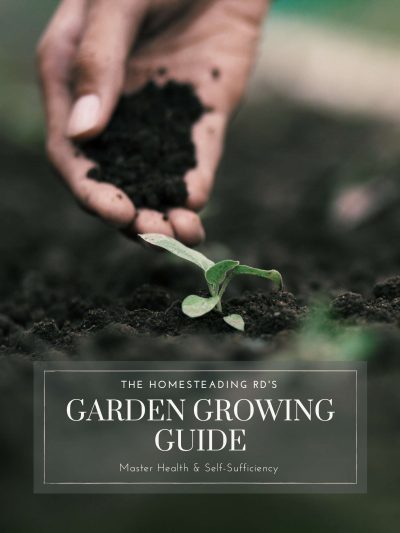*Disclosure: This post may contain affiliate links to products (including Amazon). I’ll earn a small commission if you make a purchase through my link, at no additional cost to you! Regardless, I only link to products that I personally use on our homestead or believe in.
The 10 BEST Vegetables to Grow in Raised Beds
The key things to look for when deciding on the best vegetables to grow in raised beds are plant size, growth patterns, temperature needs, root depth, and time to harvest. If this seems overwhelming, don’t worry, I’ve done all of the brainstorming for you!
#1: Bush beans
Bush beans are one of my favorites to grow in raised beds! They are compact plants with a fast turnaround time (50-60 days to maturity). That means you can grow a round of bush beans, and then plant something else within the same season! Beans also return nitrogen to the soil, which your future plants will be appreciative of.
#2: Greens
You will pretty much ALWAYS find greens growing in my raised beds – they are perfect for this type of space. This group includes things like spinach, kale, lettuce, baby greens, swiss chard, collard greens, asian greens, mustard greens, you name it!
I love utilizing greens in raised bed gardens because they are fast-growing and compact, which means that they share with other plants well if you are limited on garden space. They make wonderful companion plants, too! Lastly, I have my raised beds close to the house and my big in-ground garden further away, so it’s nice to be able to step right out of my door to quickly snip off a salad for lunch.
#3: Carrots
When I think of raised beds, the first vegetable that comes to mind is carrots. Carrots have very long roots with some varieties reaching 9″ long, or more! Because of this, carrots appreciate deep, loose, workable soil, which can sometimes be hard to achieve in in-ground gardens that are riddled with heavy clay and/or rocks.
Raised beds are a great way to build a solid base of loose soil that will help your carrots grow straight and strong. If grown in compact and/or rocky soil, carrots can often end up crooked, wonky, forked, or stubby.
#4: Herbs
Herbs are a lovely addition to any raised bed and since herbs appreciate well-drained soil, raised beds provide a great growing medium for them. I love that some herbs like dill can operate as a beneficial companion plant and improve the overall health of other vegetables nearby.
Keep in mind that many herbs such as mint, oregano, lemon balm, and thyme are perennials. Therefore, I like to keep these in the corners of my beds to keep the middle open and flexible. Also, mint and oregano are aggressive spreaders and can EASILY take over an entire raised bed, so I recommend planting them inside a pot to keep their roots contained.
Basil is another common herb in raised beds, but it can bolt (flower) quickly, shortening your harvest window. Learn how to manage basil properly in my article Basil Plant Flowering? Here’s What to Do About It.
#5: Strawberries
Strawberries and raised beds go together like peas and carrots. There are so many benefits to this pairing! Everyone loves strawberries (critters included!) so keeping them elevated can help keep them safe. Second, strawberries tend to spread quickly, which can be hard to manage outside of a confined space like a raised bed.
Lastly, strawberries make a lovely low-growing ground cover for any of your taller plants. They typically bear fruit early (in June), then go dormant as the other vegetables are starting to pick up speed later in the growing season. A great companion plant and way to maximize your garden space!
#6: Radishes, Turnips & Beets
I’ve had the best luck growing root crops like radishes, turnips, and beets in raised beds. Whenever I switch over to my in-ground garden they don’t seem to do as well. They must appreciate the loose, workable soil that raised beds provide.
Radishes, turnips, and beets are also fast-growing crops, which means that you can rotate them with other vegetables later in the season. They also don’t take up much room so that makes them a great addition to raised beds if you’re short on planting space.
#7: Cucumbers
I’ve grown cucumbers in raised beds nearly every year that I’ve been gardening and they always thrive! The soil temp in raised beds is slightly higher than it is in in-ground gardens, so that helps those cucumber seeds germinate quickly in the spring. A plus if you live in a cold climate like me (zone 4a)!
You can utilize a basic trellis (like mine below), or create an entire hoop that spreads to the next bed over! That really helps maximize the space, and it looks pretty neat, too! I also enjoy that they are up a little higher when in raised beds, which makes them easy to prune and train as they grow.
If you notice any issues with your cucumbers this summer, be sure to check out my article Cucumber Leaves Turning Yellow? Here’s 5 Reasons & Solutions!
#8: Pole beans
If you already have a trellis set up for cucumbers, add some pole beans to the other side! Pole beans are different than bush beans in that they will produce throughout the whole growing season, which can be a positive or a negative, depending on your plans for that garden space.
#9: Peppers
Since the soil is slightly warmer in raised beds than in in-ground gardens, peppers are an easy winner here! Peppers thrive in warm weather conditions and quickly decline when exposed to cold, so using raised beds can certainly extend your growing season when growing sensitive plants like peppers.
If you live in a warm climate, you may want to consider Topping Pepper Plants to improve their yield. However, it’s not a decision to be made lightly, so be sure to read up about it before you go snipping away.
#10: Marigolds
Marigolds are something I’ve been experimenting with over the past few years and now I’m kicking myself for not including them earlier! They have natural pest-repellent properties and the ability to improve soil health. Marigolds emit a strong scent that can help deter pests such as nematodes, aphids, and whiteflies, which are common threats to raised bed gardens.
Additionally, marigolds are known for their ability to improve soil health by releasing organic compounds such as thiophenes, terpenes, and flavonoids to suppress harmful soil-borne pathogens and promote beneficial microorganisms. Lastly, the bright and colorful flowers of marigolds can also add aesthetic appeal to the garden and attract pollinators.
The 3 WORST Vegetables in Raised Beds
Okay, so we’ve covered some AMAZING vegetables to grow in raised beds, but there are still a few out there that are best left out of these elevated spaces.
#1: Corn
Corn technically can be grown in raised beds, but they are most often planted in large in-ground gardens. The reason for this is that you need to plant a large block of corn (minimum of 4 rows) for adequate pollination. Most raised beds aren’t large enough to accommodate this.
#2: Vining plants
If you want to make a complete mess of your raised beds, then look no further than the vining vegetables such as melons, pumpkins, and winter squash. Uff da! These vines can get LONG (20+ feet) and rapidly take over the space. Reserve these large vining plants to large in-ground gardens with lots of available space to sprawl.
Want to give them a try? Make sure to read about the 5 BEST Pumpkin Companion Plants (and 3 to AVOID!)!
#3: Large perennials (asparagus, rhubarb)
Another set of plants to consider leaving out of your raised beds are large perennials like asparagus and rhubarb. They are hardy, prolific growers that are best placed in their own corner somewhere. They’ll quickly take over a small raised bed, making the space unavailable for anything else.
Check out my list of the 5 BEST Asparagus Companion Plants (and 3 to Avoid!) and the Best and Worst Rhubarb Companion Plants for some great growing tips!
The Benefits of Using Raised Garden Beds
While I LOVE my large in-ground garden, there are definitely a lot of benefits to utilizing raised garden beds. I have several raised beds that I keep close to our home and they are wonderful!
Less weed pressure
This is a HUGE benefit, especially if you are short on time. While you will still have a few weeds to keep up with in raised beds, they hardly compare to the weeds you’ll face in an in-ground garden. The hardest part of in-ground gardens is the ever-encroaching line of weeds coming in through the perimeter.
If you’re struggling with a lot of weeds, I highly recommend adding some mulch! I fell in love with organic straw last year after I had an epic battle with weeds after creating my new garden space. It was a total game changer and I’ll forever use it now!
Improved soil quality
While I’m a huge advocate of using a little elbow grease and working with what you have, sometimes you just have to wave the white flag and go to plan B. Raised beds allow you to start with a well-balanced, loose, and workable soil mix from the get-go.
Better drainage
This is really helpful if you live in a wet, humid environment or if you have heavy clay soil that doesn’t drain very well. Plants like even, regular watering, but they don’t like soggy conditions either. This can ultimately lead to root rot, fungal disease, damping-off, and ultimately, plant death.
Warmer soil
Since raised beds are raised up away from the earth, that means that they warm up faster in the spring (further away from that frozen ground!). This can be a huge plus if you live in a cold climate like me! However, if you live in a warm climate, this tendency toward warmer and drier soil might end up frying your plants.
Easier to work in
If you have mobility issues, painful knees, or just simply don’t enjoy crawling around on your hands and knees, raised beds are an excellent option! Raised beds come in a lot of different heights that you can choose from to find the perfect match for your needs. Vertical gardens are a great option, too!
FAQ About Growing in Raised Beds
Are raised beds better than in-ground gardens?
There’s no right answer to this question because it’s highly individualized. Ultimately, the decision between raised beds and in-ground gardens comes down to your specific gardening needs, preferences, and constraints. Consider factors such as soil quality, drainage, growing zone, accessibility, cost, and aesthetic preferences to determine which option is the best fit for your garden.
Additionally, you may choose to incorporate a combination of raised beds and in-ground gardens to enjoy the benefits of both approaches. That’s what I do! I like to keep a few raised beds close to the house for easy things to grab (herbs, greens) and then I have a large in-ground garden for everything else further back.
What should I fill my raised beds with?
How deep should a raised garden bed be?
The ideal depth for a raised garden bed depends on the types of plants you intend to grow, the quality of your soil, and your climate. However, a common recommendation is a depth of at least 6-12 inches. This depth allows for adequate root development and soil volume for healthy plant growth.
If you’re growing plants with particularly deep root systems or if your soil is of poor quality, you might consider constructing raised beds that are even deeper. However, this can get expensive since more soil is required to fill the bed, plus more materials to build a taller raised bed. Balance is key!
Other Gardening Articles You’ll Love:
- The Best Compost for Your Vegetable Garden
- DIY Toxin-Free Raised Bed Liner
- Growing Tomatoes in Grow Bags: A Comprehensive Guide
- The 5 BEST Soil pH Testers
- The 6 BEST Vertical Garden Kits

